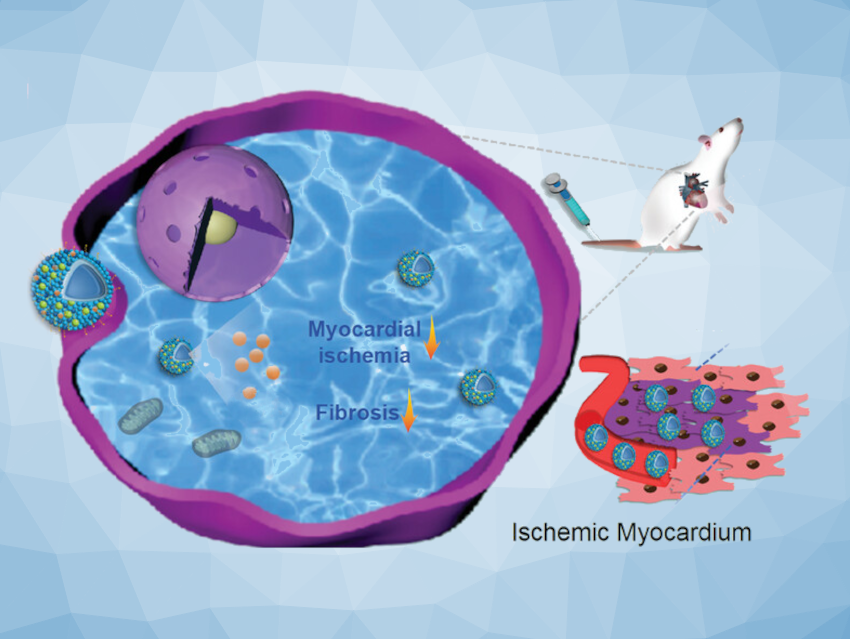Coronary microvascular dysfunction (CMD) is a disease affecting the heart in which there is damage to the tiny arteries that can lead to spasms and decreased blood flow. It can be an indicator for an increased risk of adverse outcomes for heart disease patients. Detecting such a limitation of blood flow could improve treatment outcomes.
Jiawei Tian, The Second Affiliated Hospital of Harbin Medical University, Harbin, China, Guo-Qing Du, Sun Yat-sen Memorial Hospital, Sun Yat-sen University, Guangzhou, China, and colleagues have developed a method that allows for imaging and treatment of CMD, using nanobubbles that are guided by a peptide specifically targeting parts of the heart muscle that do not receive sufficient blood flow (ischemic myocardium). This peptide (IMTP) was bound to a polyethyleneglycol (PEG)-functionalized lipid (DSPE-PEG2000) and incorporated into a phospholipid bilayer to create nanobubbles.
The nanobubbles were functionalized with indocyanine green for fluorescence imaging and filled with an inert gas for ultrasound imaging. They are also suitable for use in photoacoustic imaging, a method that combines the high contrast of optical imaging with the high spatial resolution of ultrasound imaging. Tannic acid was incorporated into the nanobubbles as a therapeutic agent that can protect heart tissue. Overall, the functionalized nanobubbles could serve as a targeted therapeutic and diagnostic tool for coronary microvascular dysfunction.
- Ischemic Myocardium Targeting Peptide‐Guided Nanobubbles for Multimodal Imaging and Treatment of Coronary Microvascular Dysfunction,
Bo Yu, Ziwei Pang, Jing Zhao, Jingyi Xue, Hsuan Lo, Tiancheng Gu, Ping Zhang, Jiawei Tian, Guo‐Qing Du,
Adv. Healthcare Mater. 2025.
https://doi.org/10.1002/adhm.202404477

